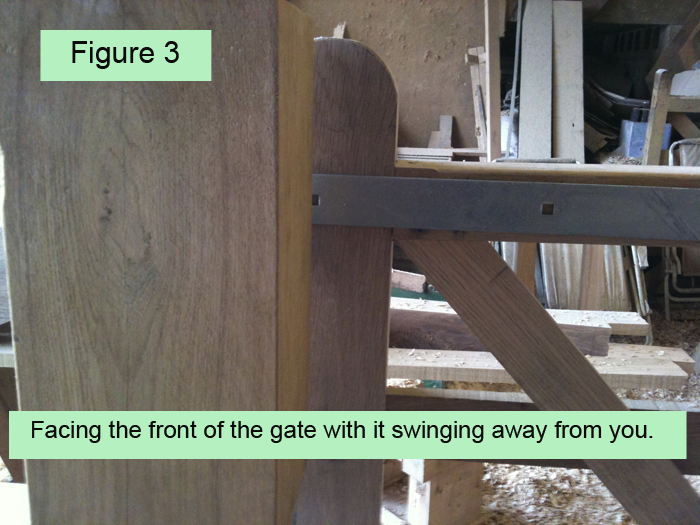Categories Help & Advice Gate hanging advice and ironwork allowances
Gate hanging advice and ironwork allowances
Hanging your gate
Care
The first few weeks of hanging a timber gate are crucial to getting the full life span out of it. Many factors can influence the chances of twisting a gate, whether soft or hardwood, dont allow the gate to drag, always secure the gates top and bottom with a dropbolt and headloop, or in the case of a single gate that doesnt hit the back of the post when shut please use a clapping strip, a small length of timber that you fasten up the inside of the post for the gate to shut against.
If you do notice twisting start to occur then dont leave it months until its too late to stop. A recently hung new gate is still evolving and adapting to its enviroment. The best method of straightening is the 'string back' which involves forcing the gate back in the opposite direction of the twist overnight, place a block between the post and either the top or bottom of the swinging upright of the gate, then pull the upright into the post and tie it off, literally forcing the gate to twist in the opposite direction.
There are 2 main ways of hanging a gate, between or off the back of the posts.
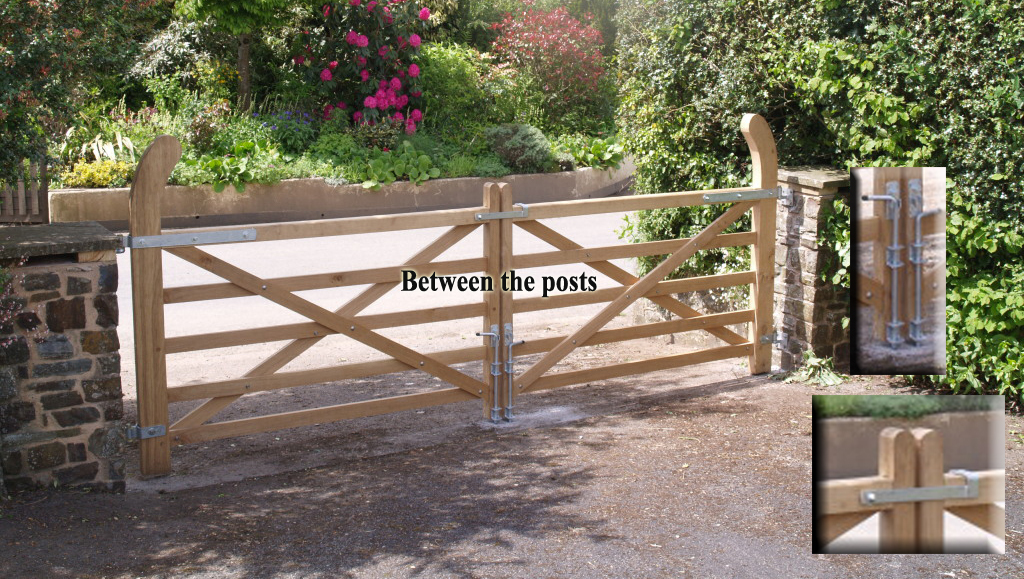
Hanging between the posts allows the gates to swing inwards and outwards around 90 degrees before the gate fouls the post. Hanging this way allows you to see all of the gate (and ironwork) from both sides but please keep in mind that there is approx 115mm space between the hanging upright and post to allow for the ironwork, see gate hanging allowances below. Note the essential dropbolts and headloop (insert pics), these keep the gates secure and help prevent any newly hung timber gate from twisting.
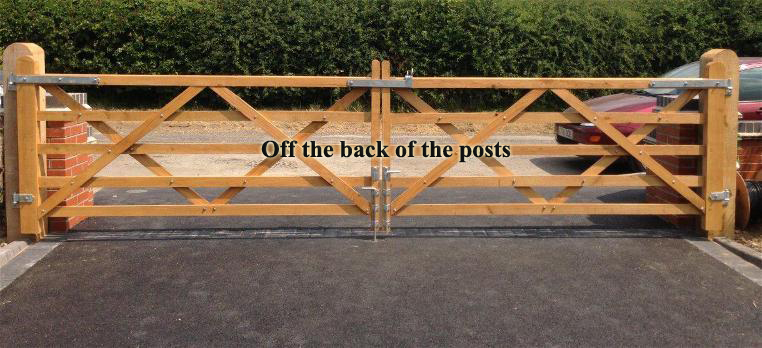
Hanging off the back of the posts allows the gates to swing 180 degrees inwards maximising driveway space and also prevently the gates from swinging into the road. Hanging this way means that your gate size is larger than the gap between posts, see below for allowances. Again note the essential dropbolt and headloops for security and stability.
Gate hanging allowances
The adjustments you need to make to allow for different hanging styles and types of ironwork can be confusing, ive tried to explain the most common below but please ring if in any doubt and i will gladly work out the gate size for you.
Ironwork
The most common ironwork used for hanging the heavier 3inch (75mm) gates, its a double strap style to give extra support across the morticed and tennoned joint. There are 2 main ways of using this ironwork, between or off the back of your posts.
Hanging your gate between the posts allows it to swing 90degrees both ways, in and out, to do this you need to allow 120mm between the post and the gate upright (figure 1 below). To make sure that the gate doesnt fit tight to the swinging end post then please allow an extra (10 - 12mm), making a total of 130-132mm off the total gap between your posts.
i.e. if the total gap between your posts is 3660mm, then the size of gate you need is 3530mm (3660-130mm)
If you are hanging 2 gates as a pair between your posts then you need to allow 250mm off your gap. ( 2x120mm ironwork allowance = 240mm + 10mm allowance where the gate meet in the middle = 250mm)
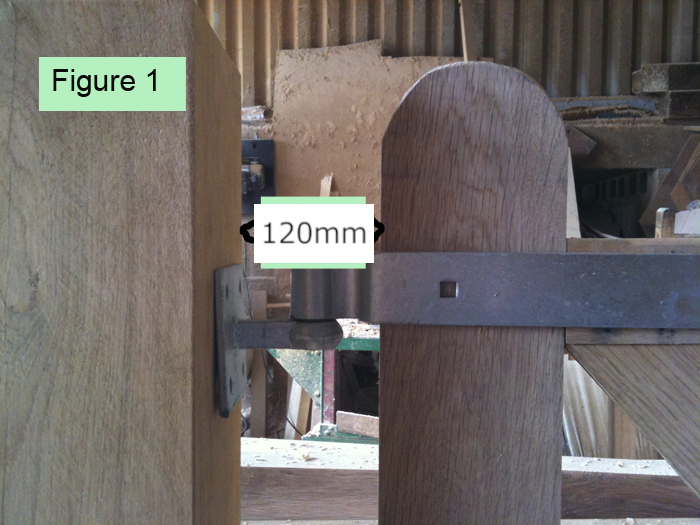 FIGURE 1
FIGURE 1
Hanging you gate off the back of the posts is the most common and easy way to hang your gates, you dont have to be so precise as the gate hits the back of the swinging post so it doesnt really matter if it hits a bit further along. Idealy you want your post hooks to sit in the middle of the post (figure 2) and your gate to hit about 40mm up the swinging post.
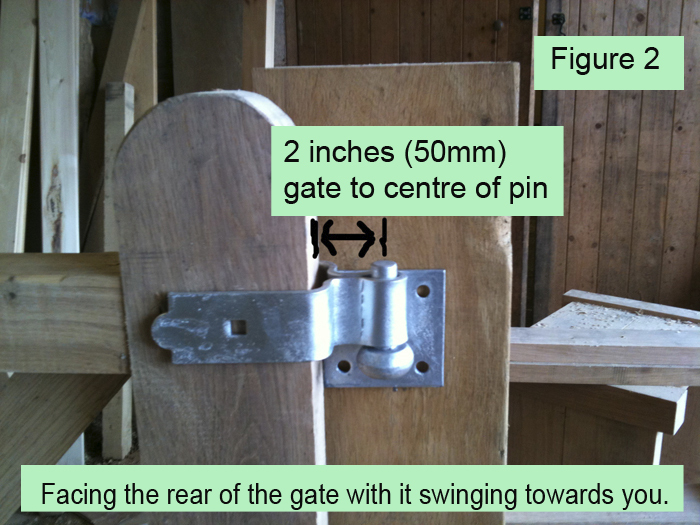
To calculate your gate size for this hanging style and to get your gate pins in the centre of the post depends on post sizes.
Hanging on a 6x6inch post you need to ADD 2.5 inches (63mm) to your gap between posts for your gate size. (3inches to the centre of post, minus 2inches to allow for ironwork = 1inch, plus 1.5inches for the swinging end overlap = a total of 2.5inches) - If hanging 2 gates as a pair please add 1.5inches (38mm) to the gap between your posts, then divide the final gap into the 2 gate sizes that you preffer.
Hanging on a 7x7inch post you need to ADD 3 inches (75mm) to your gap between posts for your gate size. (3.5inches to the centre of post, minus 2inches to allow for ironwork = 1.5inches, plus 1.5inches for the swinging end overlap = a total of 3inches) - If hanging 2 gates as a pair please add 2.5inches (63mm) to the gap between your posts, then divide the final gap into the 2 gate sizes that you preffer.
Hanging on a 8x8inch post you need to ADD 3.5 inches (87mm) to your gap between posts for your gate size. (4inches to the centre of post, minus 2inches to allow for ironwork = 2inches, plus 1.5inches for the swinging end overlap = a total of 3.5inches) - If hanging 2 gates as a pair please add 3.5inches (87mm) to the gap between your posts, then divide the final gap into the 2 gate sizes that you preffer.
i.e. If you have an 11foot, 132inch gap between your posts and you are hanging off an 8x8inch post then your a single gate needs to be 135.5inches (132 + 3.5inches for an 8x8) or for a pair divide this gap into 2 sizes that you like i.e. 100 and a 35.5inch gate.
